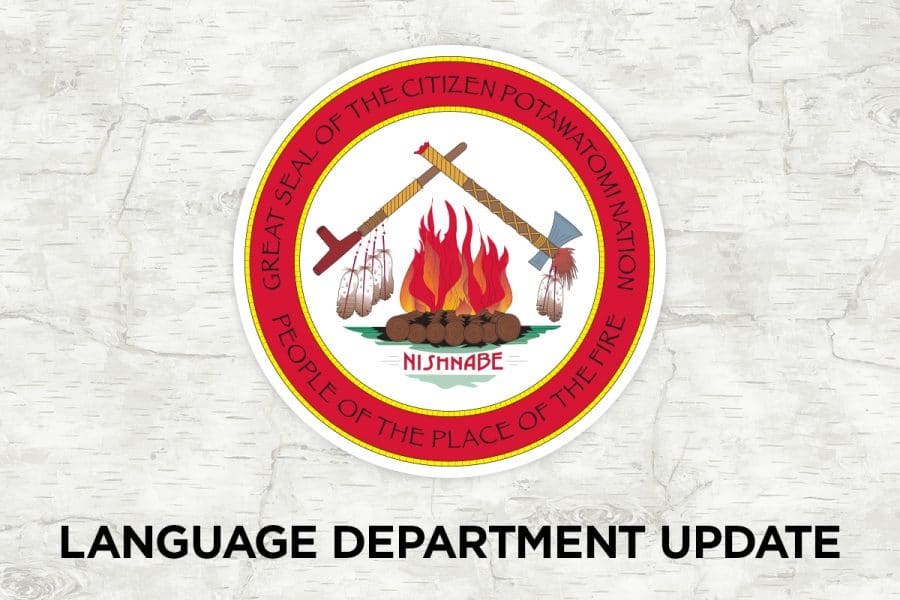By Justin Neely, Director of the CPN Department of Language
The language department has been working with other Potawatomi language departments across the U.S. on Potawatomi grammar. I think some of the things we have been dealing with would be of interest to members throughout the U.S.

The class is being taught by Citizen Potawatomi tribal member and linguist Lindsay Marean. Igwien (heartfelt thanks) to the Prairie Band Potawatomi Language Department for hosting this class.
There are four main types of verbs in Potawatomi:
VAI or class 2, VII verbs or class 1, VTI verbs or class 3, and VTA verbs or class 4. VAI verbs are usually just statement verbs that don’t affect other people: “I sit, I read, I eat.” VII verbs are often adjectives in English: “It’s big. They are big.” VII verbs also talk about weather: “It’s cold,” or “It’s hot.” VTI verbs are verbs where a person interacts with an item: “I see it. They pick them up.” VTA verbs are verbs where two animate actors act upon something animate: “I talk to him. He reads to me. They pick up tobacco.” Certain items in nature, some foods and spiritual items are considered animate.
There are also independent, conjunct, imperative and prohibitive modes. Independent is usually used with basic statements or “yes/no” questions. The conjunct is used for more complicated who, what, when, where-type questions. When there are multiple verbs in a sentence, often the second and following verbs will be in the conjunct. Though as this class showed, a speaker can use the different forms to shift focus on what is going on and can break what might seem like definite rules.
We have spent a considerable amount of time looking at VTA or transitive animate verbs. This is when a person acts on another person or animate item. Certain objects in nature, certain foods and spiritual items are considered animate. One thing that I have found useful when studying these verbs is to group them in the following manner. When you group them, it is easier to see the similarities.
Independent
You (singular)
Gwabem – You see me
Gwabma – You see him/her
Gwabmimen – You see us (you)
Gwabmak – You see them
He/She
Nwabmek – He/she sees me
Gwabmek – He/she sees you
Wabman – He/she sees him/her/them
Nwabmegnan – He/she sees us-u
Gwabmegnan – He/she sees us all
Gwabmegwa – He/she sees you all
I/me
Gwabmen – I see you
Nwabma – I see him
We, but not you
Nwabmamen – We/you see him/her/them
“We but not you” has a little variation between northern and southern Potawatomi
Northern
Gwabmego – We/you see you
Southern
Kwabmenmen – We/you see you
You All
Gwabmem – You all see me
Gwabmawa– You all see him/her
Gwabmimwen – You all see us (you)
Gwabmawak – You all see them
They
Nwabmegok– They see me
Gwabmegok– They see you
Wabmawan – They see him/her/them
Nwabmegnanek– They see us (you)
Gwabmegnanek – They see us all
Gwabmegwak– They see you all
I/me
Gwabmenem – I see you all
Nwabmak– I see them
We all
Gwabmamen – We see him/her/them
“We but not you” has a little variation between northern and southern Potawatomi
Northern
Gwabmegom– We/you see you all
Southern
Kwabmenmen – We/you see you
